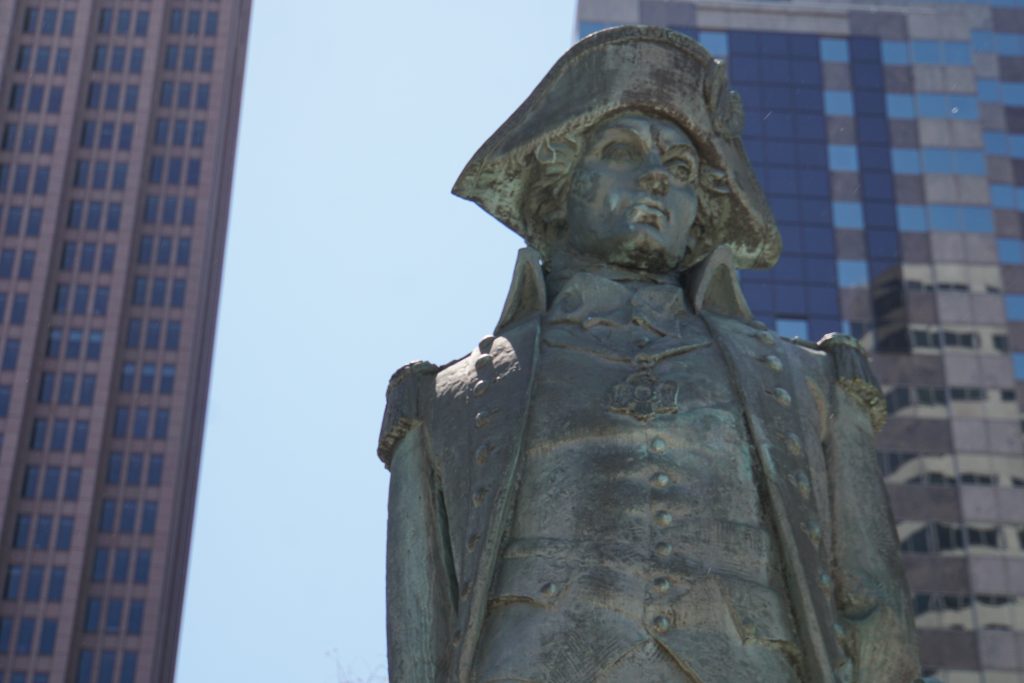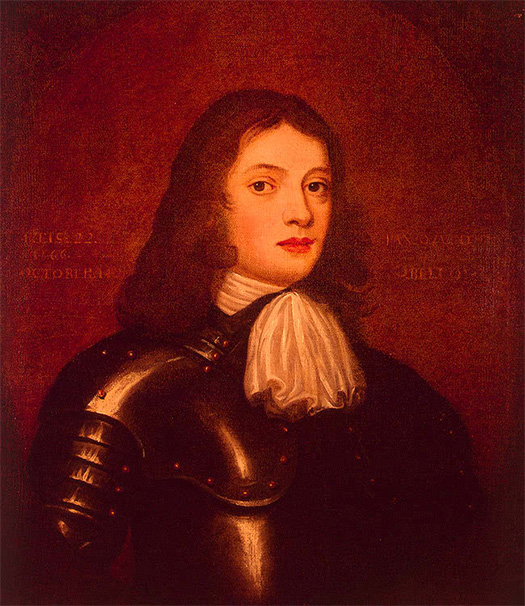November 16, 2019
William Penn: Paving the Way for an Equitable Pennsylvania

By: burgundy bug
William Penn statue in Philadelphia
Source: Philly in April | Penelope Peru Photograph
William Penn, the founder of Pennsylvania, championed for liberty of conscience – or “religious freedom” – during an era of bitter religious conflicts that led to persecution throughout Europe.
Using his tolerant Quaker ideologies to form the basis of Pennsylvania’s government, Penn’s colony quickly became a melting pot of ethnicities and religious identities where settlers could seek refugee to embrace their beliefs.
Today, Pennsylvania remains a melting pot rich in culture, identity, and history.
Religious Persecution
Early American settlers often made the voyage across the ocean seeking the promise of religious freedom to avoid persecution and protect their ideologies.
Beginning in the 1630s, the Puritans were the first to seek religious freedom in America, according to the Library of Congress.
“As many as 20,000 Puritans emigrated to America from England to gain the liberty to worship God as they chose,” LOC explains. “Most settled in New England, but some went as far as the West Indies.”
European persecution was wielded as a tool by those in power to punish those with opposing religious beliefs. Catholics sparred with Protestants and Huguenots, Protestants sparred with Jesuits, and all vice-versa.
“Nonconformists could expect no mercy and might be executed as heretics.”
Religion and the Founding of the American Republic | Library of Congress
Soon thereafter, New Jersey, Pennsylvania, and Maryland were established as “plantations of religion,” but it was Penn’s beliefs in religious tolerance, diversity, and a representative government that made Pennsylvania truly unique, as stated by Pennsbury Manor.
William Penn
Oil portrait of William Penn at 22 years old.
Source: William Penn and His Holy Experiment | Library of Congress
Penn (Oct. 14, 1644 – July 30, 1718), son of Admiral Sir William Penn, published 42 books and pamphlets within seven years of converting to Quaker faith, which landed him as a prisoner in the Tower of London multiple times for publicizing his Quaker beliefs, says Encyclopedia Britannica.
In 1681, King Charles II of England granted Penn a large mass of land west of the Delaware River in repayment of debt Charles II owed to Penn’s father. Paying homage to his paternal roots, Penn named the land “Pennsylvania.”
Penn himself was barely in Pennsylvania for two years before his forced return to England, according to LOC. King James II coming to power in England caused political strife for Penn, stripping him of his colony for several years.
Yet, Penn continued to stand for his Quaker beliefs and published multiple works about his ideologies throughout the 1690s.
Pennsylvania and Religious Tolerance
“One Almighty and Eternal God…shall in no wayes be molested or prejudiced for their Religious Perswasion or Practice in matters of Faith and Worship.”
William Penn
Penn took Charles II’s grant as an opportunity to embrace and encourage religious tolerance as law, as stated by Pennsbury Manor.
Pennsylvania wasn’t just a safe haven for Quakers. Unlike the other colonies, Pennsylvania didn’t have an official church and Penn welcomed other religious minorities suffering in Europe into his colony.
However, religious tolerance didn’t translate perfectly into having equal rights. Only Christians could vote or hold political office in colonial Pennsylvania, but all settlers were allowed to participate in the commonwealth socially and economically.
Pennsylvania was a religious experiment that hit the ground running. Its peaceful and tolerant ideologies quickly made it the most culturally diverse of the thirteen original colonies, according to LOC.
Pennsylvania and Cultural Diversity
In contrast with the hostile conflicts taking place in London, Penn saw his colony as “a green country town, which will never be burnt and always be wholesome.” Driving the point home even further, “Philadelphia” means “City of Brotherly Love.”
Penn is remembered for maintaining peaceful interactions with the Lenape Indians, which kept armed conflict from erupting between the native tribes and Pennsylvania until the French and Indian War in 1754.
German, Scottish-Irish, Dutch, Sweedish, French Huguenot, Jewish, and settlers of many other cultural identities lived in Pennsylvania alongside the English and Native Americans, says Pennsylvania Historical & Museum Commission.
Although Quakers were opposed to slavery, roughly 4,000 African American slaves had been brought to Pennsylvania by the 1730s. The 1790 census data shows about 10,000 African Americans were living in Pennsylvania and 6,500 (65 percent) of them were free.
“The Pennsylvania Gradual Abolition Act of 1780 was the first emancipation statute in the United States.”
Pennsylvania Historical & Museum Commission
Pennsylvania and Diversity Today
Cultural Diversity
Today, Pennsylvania remains home to an array of cultural identities. According to the 2018 US Census Bureau, about 76 percent of Pennsylvania’s population is caucasian, 12 percent are African American, eight percent are Hispanic, four percent are Asian, and two percent are at least two races.
Philadelphia, the City of Brotherly Love, is the sixth most populated city in the United States with a diverse population: 43 percent are African American, 34 percent are caucasian, 15 percent are Hispanic, eight percent are Asian, and three percent are at least two races.
Religious Diversity
Cross statue in Philadelphia
Source: Philly in April | Penelope Peru Photograph
In terms of religion, Pew Research Center reports 73 percent of adults in Pennsylvania are Christian, six percent follow a non-Christian faith, and 21 percent identify with no religion.
In Philadelphia, 68 percent are Christian, eight percent follow a non-Christian faith, and 24 percent identify with no religion.
In Conclusion
Cultural and religious diversity is embodied in the roots of Pennsylvania and has continued to flourish through shifts in America’s cultural climate for nearly 340 years.
Penn’s advocacy for his Quaker-based beliefs in tolerance and peace fertilized Pennsylvania’s grounds as a “plantation of religion” and set it apart from the other 12 colonies.
Today, these values are reflected in Pennsylvania’s diverse population –particularly in Philadelphia, where culture and diversity are embraced throughout the city. Various cultures are represented in Philadelphia’s murals, restaurants, and museums.
Read: Philly Culture
The Burgundy Zine
Interested in having content featured in an upcoming blog post or issue of The Burgundy Zine? Head on over to the submissions page!
For all other inquiries, please fulfill a contact form.




